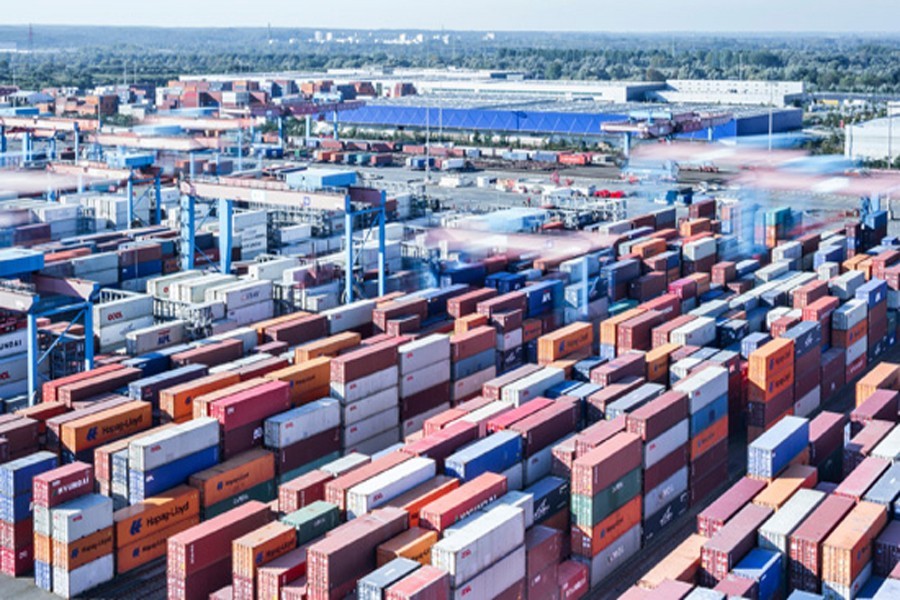It is a piece of welcome news that the Chittagong Port, according to the latest Lloyd's List, has moved six notches up to become the 64th busiest container port in the world. Unfortunately, Bangladeshi businesses are not in a mood to appreciate the achievement as severe congestion of container ships, at the moment, is taking an economic toll on them. Unloading of imported goods and raw materials now takes an additional eight to twelve days' time. Businesses are worried that the situation might turn worse because of upcoming Eid-ul Azha vacation that will be a relatively prolonged one this time.
Exporters are the worst hit. Because of congestion of container vessels, they are not receiving the timely delivery of raw materials. The delay would, obviously, make it almost impossible for them to send goods to their buyers on schedule. The congestion of container vessels had reportedly eased to a notable extent in the recent times because of addition of a few cargo handling equipment and capital dredging of the Karnaphuli River. Last year, the port handled a record number of containers.
The situation with container handling at the country's premier port, businesses say, was tolerable until April last. But it started taking longer time than usual again from the month of May. The port authorities blame the cyclonic storm 'Fani' , Eid-ul-fitr holidays and inclement weather for a number of days of congestion. It is nothing unusual for ports to face operational setback because of inclement weather. However, efficient ports do overcome the setback at a fast pace and clear the congestions of ship, if there is any.
The Chittagong Port has a long history of performing well below the expectation of businesses, mainly due to labour trouble and shortage of modern cargo handling equipment. The first problem is now resolved, to a large extent, due to lesser political influence over labourers and greater involvement of private sector in cargo handling operations. The port that handles nearly 98 per cent export-import cargo does require more and more equipment for expeditious delivery of cargo. In addition to that, the efficiency level of the men behind the machines and relevant others also needs to be raised.
It is now quite apparent that the volume of cargoes that the country's ports handle would continue to rise with the size of its external trade growing unabatedly. The emerging economic zones would also add to the volume of both inbound and outbound container cargoes. In such a situation, the Chittagong Port might find it really difficult to handle the future cargo load. It will, thus, be necessary to divert an increased volume of cargoes to the Mongla Port and, later, to the under-construction Payra Port. Businesses are now found not that interested in using the Mongla Port for communication problem. With the completion of the Padma Bridge, they, hopefully, might feel encouraged to take a different approach.


